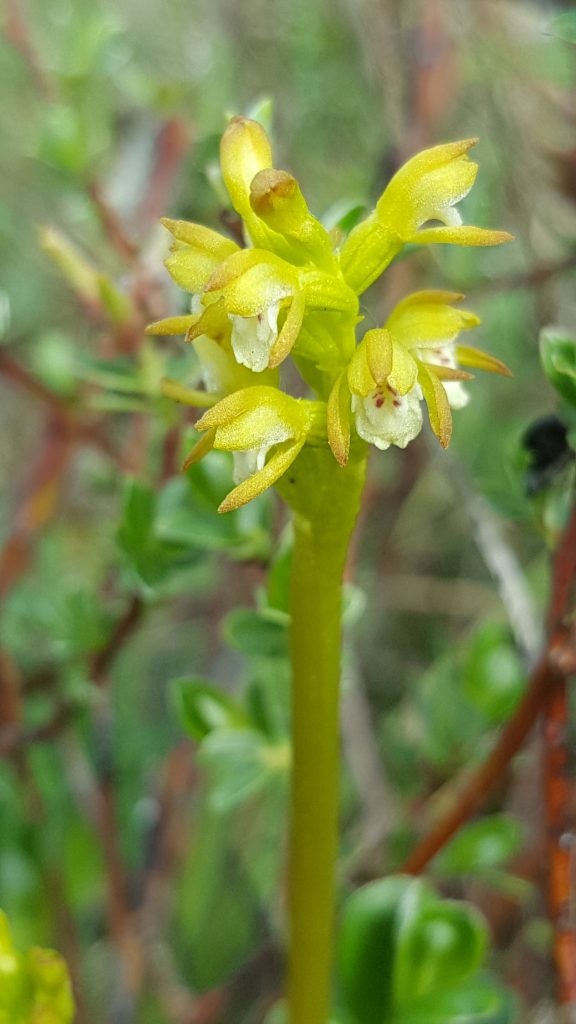Photographed as Sandscale Haws 26th May 2018, the Coralroot Orchid is an unusual rarity. It is one of a small number of saprophytic orchids – ones that live from decaying organic matter, rather than photosynthesize. It gets energy and nutrients from fungi that it hosts in a lumpy underground part of the plant that exists in place of roots. This part of the plant has a coral like appearance. So in spite of its name, the Coralroot Orchid, Corallorhiza trifida, doesn’t have a root at all!.
Unlike other saprophytic orchids the Caralroot Orchid does have a little chlorophyll in its stem – allowing some limited photosynthesis when in bloom as an energy boost. However it is dependent on the fungi it hosts to survive. Without it, it would die. A consequence of this food source is that it can exist underground and can sometimes be absent for a season or two. This may account for the wide variations in number of plants from year to year.
Due to its size and the ‘dormant periods’ its difficult to be sure of numbers but it sis likely to be considered endangered and is on the amber list of endangered and rare plants.
Its strongholds are in Scotland with a few colonies existing in Northern England. It prefers a damper habitat such as dune slacks or woodland and frequently grows with creeping willow. Its flowering period is relatively long, running from May to July, although individual plants only flower for a few days. Those that grow in woodland and further north flower later.
